Learn the basics of hand sewing, machine stitching, and garment-making techniques to create everything from everyday outfits to stunning couture pieces.
Introduction
So, you've decided to dive into the world of sewing - congratulations.
Sewing your own clothes is a rewarding skill that lets you create garments tailored to your style.
This guide is written for beginners with little to no experience, so don't worry if you're not sure how to sew clothes yet.
We'll start from the very basics (like hand stitching) and work our way up to using a sewing machine.
Along the way, you'll learn fundamental sewing techniques and get an overview of garment construction.
By the end, you'll understand how to go from a pile of fabric to a finished piece of clothing.
The tone here is friendly and encouraging - consider this article your sewing buddy, cheering you on as you take your first stitches.
Let's get started on this journey of sewing for beginners!
Introduction to Hand Sewing
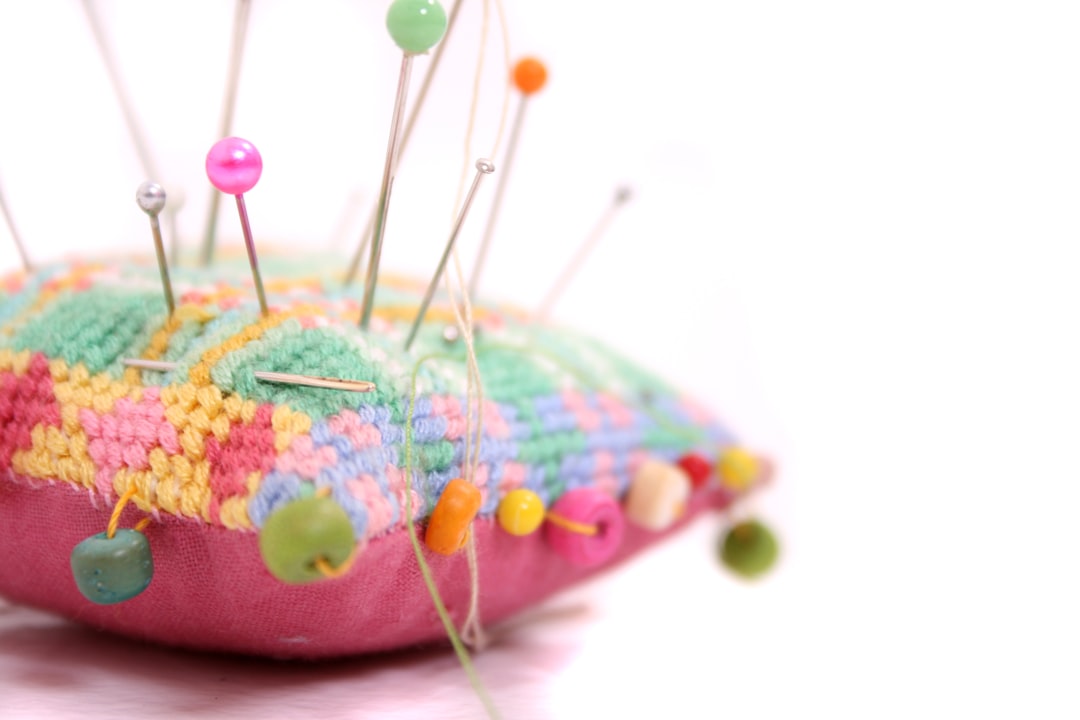
Hand sewing is a great way to begin your sewing adventure, and it requires only the simplest tools. In fact, all you need is a needle and thread to start sewing by hand - no fancy equipment of advanced skills needed. By threading a needle and making a few basic stitches, you can get a feel for how fabrics join together.
Hand sewing might sound old-fashioned, but it's an essential foundation for understanding stitch formation and fabric control. It's also incredibly accessible. - you can practice almost anywhere, and it costs next to nothing to get started.
When you sew by hand, you have a lot of control over each stitch. This makes hand sewing perfect for small repairs, delicate sewing tasks, and adding fine details. Many beginners find that hand stitching is almost meditative - the rhythmic movement of the needle can be calming.
It's worth learning a few basic hand stitches such as the running stitch (a simple in-and-out stitch for seams or basting) and the backstitch (a strong stitch for seams that mimics machine stitching). These stitches will come in handy even after you graduate to a sewing machine.
Hand sewing does have some drawback to be aware of: it's time-consuming and generally much slower than using a machine, so larger projects can take a long time.
Also, some hand-sewn seams usually aren't as strong as machine-sewn seams. For example, the seam of a hand-sewn skirt might not hold up to much strain or frequent washing as machine-stitched seams.
But for learning and for certain tasks (like sewing on buttons or finishing an inside lining invisibly), hand-sewing is ideal. In fact, most sewists use a combination of hand and machine methods in their projects.
The key point here is that hand sewing is an excellent place to start: it teaches you how fabric behaves and how stitches are formed, and it gives you a feel for guiding needle and thread through cloth - skills that will benefit you when you move on to machine sewing.
Before moving on, try a small hand-sewing project. For instance, you could hem a simple scarf by hand or sew a button onto a scrap of fabric. Practicing these basics will build your confidence.
Remember, every expert fashion designer or tailor started with that first humble stitch.
Enjoy the process and don't rush - after all, part of the joy of sewing is the journey, not just the destination!
Mastering a Sewing Machine
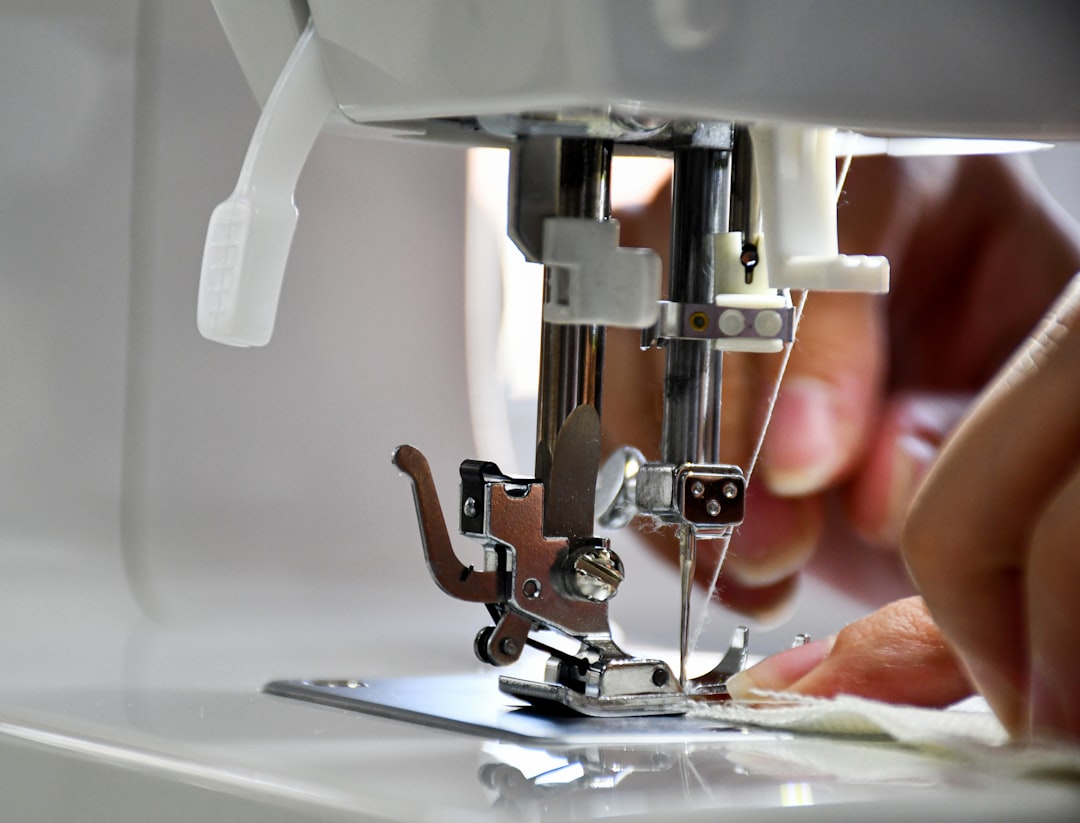
Once you're comfortable with the idea of sewing and have tried a bit of hand stitching, you'll likely want to upgrade to using a sewing machine.
For beginners, a sewing machine can seem a little intimidating with all its parts (needles, bobbins, dials, and pedals), but with a bit of practice it will become your best friend in garment making.
The big advantage of machine sewing is speed and strength: a sewing machine can stitch fabric much faster than you can by hand, and it creates durable, even seams that hold up well.
In other words, a task that might take you hours by hand can often be done in minutes on a machine, and the result will usually be a sturdy seam with consistent stitches.
Learning to use a sewing machine is like learning to drive a car - at first there are many controls, but soon it becomes second nature.
Start by getting to know your machine's basic parts: the needle, presser foot, feed dogs, bobbin, and thread tensions knobs. You machine's manual will be a great help in showing you ow to wind a bobbin (the little spool that feeds the bottom thread), thread the machine properly, and select different stitches.
Don't worry, you don't have to master every feature at once. Begin with the simplest straight stitch. Practice on scrap fabric, sewing straight lines, curves, and pivoting at corners. This will help you get comfortable controlling the speed (using the foot pedal) and guiding the fabric. It’s normal to feel a bit awkward at first – go slowly until you gain confidence.
One common beginner question is whether to learn hand sewing vs. machine sewing first. There’s no strict rule, but keep in mind that most clothing construction is done by machine. Hand sewing vs. machine sewing isn’t an either/or choice – you’ll use both. You might sew a entire garment with your machine, then hand-sew a few finishing details. If you started with hand sewing, you’ve already built a good foundation.
Now, as you learn the machine, you’ll discover it opens up a world of possibilities. A sewing machine can handle long seams and heavy fabrics that would be tough on your hands. It also offers various stitch types (like zigzag for finishing edges or stretch stitches for knits) at the turn of a dial.
Be patient with yourself as you learn to use the sewing machine. There will be a learning curve for example, figuring out the right thread tension or remembering to lower the presser foot before sewing (a mistake every beginner makes!).
Don’t be afraid to re-thread the machine or adjust settings when stitches don’t look right.
And always prioritize safety: keep your fingers a safe distance from the needle, and switch off or unplug the machine when changing the needle or doing maintenance.
With practice, operating the machine will feel more and more natural. Think of it as your creative tool – much like a painter uses a brush, you’ll use your sewing machine to create garments.
Before you know it, you’ll be zipping along seams and even experimenting with interesting techniques that the machine makes possible.
Essential Sewing Techniques
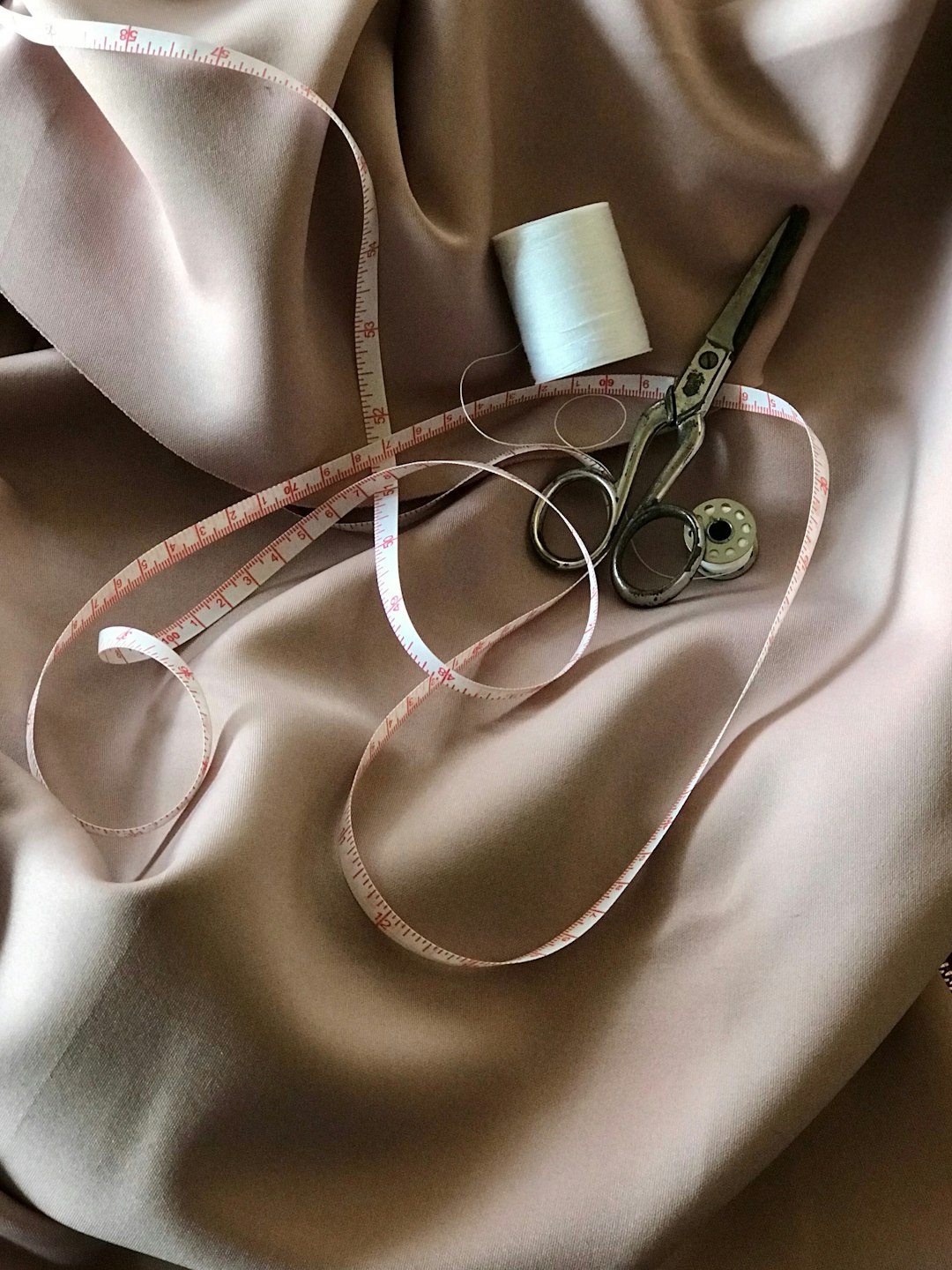
Now that you have a hand-sewing foundation and a growing confidence with the machine, let’s talk about some essential sewing techniques every beginner should learn.
Sewing a garment isn’t just about stitching a seam – there are a bunch of little skills and steps that go into making a piece of clothing. In fact, no matter what you sew, you’ll find yourself using the same core set of techniques over and over.
Here are the key skills and tasks you’ll be practicing as you start sewing clothes.
Measuring and Cutting Fabric
Every project starts with measuring and cutting your fabric pieces. This includes using tools like measuring tape, rulers, or patterns to mark out the pieces you need.
Cutting accurately is vital – a good pair of fabric scissors (kept sharp and used only for fabric) will be your best friend.
You may work with a paper pattern or simple measurements for rectangular pieces. Take your time with cutting and double-check you’re following the pattern layout or grainline instructions, as given. Accurate cutting sets the stage for everything else.
Marking and Pinning
After cutting, you’ll need to transfer important markings from your pattern onto your fabric (for example, where a dart should be sewn, or where a pocket goes).
Beginners often use fabric chalk or disappearing ink pens for this.
Once your pieces are marked, you’ll pin them together before sewing. Pinning (or using clips) aligns the fabric pieces and holds them in place. Align edges carefully and use enough pins to keep things from shifting. Think of pinning as a way to preview the seam before you stitch it. It’s a small step that prevents big mistakes. (And remember to pull out or reposition pins as you sew so you don’t hit them with the needle.)
Basting and Temporary Stitches
Sometimes you’ll want to hold pieces together with temporary stitches before the final sewing.
Basting is a technique where you make long, easily removable stitches (by hand or using a long machine stitch) to test fit or keep slippery layers in place. For example, you might baste a sleeve into a shirt to check how it hangs before permanently stitching.
Basting by hand with a simple running stitch is quick and useful for tricky fabrics that might slide around under the machine. It’s like putting in a placeholder seam that you can either sew over or remove later.
Sewing Seams with Allowances
A seam is where two pieces of fabric are sewn together.
As a beginner, you’ll mostly use the basic straight stitch on your machine to sew seams.
One term you’ll encounter is seam allowance – this is the border between the edge of the fabric and the line of stitching.
Garment patterns typically have a seam allowance (commonly 1.5 cm or 5/8 inch) built in.
It’s important to sew at the correct distance from the edge so your garment ends up the right size.
Most sewing machines have guide markings to help you keep the seam straight.
Practice sewing consistent seam allowances on scrap fabric. If you sew exactly the same distance from the edge, your seam will be straight and your pieces will match up correctly.
This is a fundamental technique to master for neat garment construction.
Pressing and Seam Finishing
Here’s a pro tip that might surprise beginners: ironing (pressing) is as important as sewing!
Pressing means using an iron to flatten seams and shape the garment as you sew. After sewing a seam, you typically press it – either “open” (splitting the seam allowance and pressing it flat to either side) or to one side, depending on the garment.
Pressing each seam may sound tedious, but don’t skip it – pressing sets the stitches and gives the garment structure, making it look polished and professional.
In addition to pressing, you’ll want to finish your seams so the raw fabric edges don’t unravel. There are several ways to finish seams: you can use a zigzag stitch along the edge, trim with pinking shears (scissors that cut a zigzag pattern), or if you have access to a serger (overlock machine) you can professionally bind the edges. For now, a simple zigzag stitch on your regular sewing machine is an easy way to secure those raw edges.
Learning to press and finish seams is one of those sewing techniques that really elevates the quality of your finished piece. It’s the difference between a garment that screams “homemade” and one that looks clean and well-made.
These essential techniques – measuring, cutting, marking, pinning, basting, sewing, pressing, and finishing – form the backbone of garment construction.
As you practice, you’ll get better and faster at each step. Don’t worry if it feels like a lot to remember at first. With each project, these steps will become more routine. Soon you’ll be pinning and pressing like a pro without a second thought!
Understanding Garment Assembly
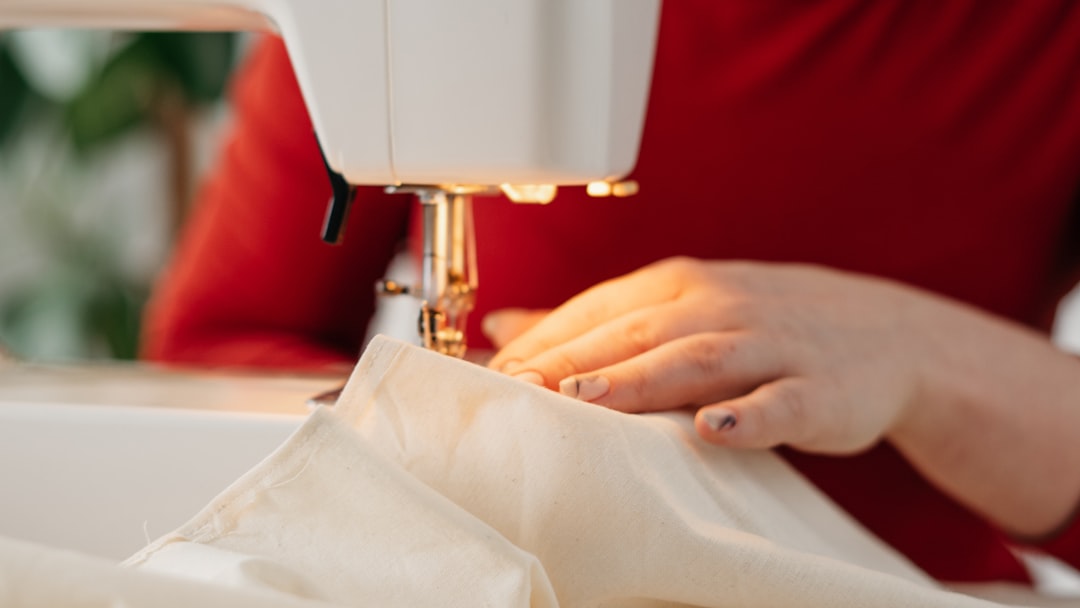
Now, how do all these skills come together to actually make a piece of clothing?
This is where we talk about garment construction (or garment assembly).
In simple terms, garment assembly is the process of turning a bunch of flat fabric pieces into a 3D wearable item. It can feel like solving a puzzle the first few times, but fortunately, you usually have a guide: most people use sewing patterns or instructions that tell you exactly how to assemble the garment. Your pattern instructions will tell you which pieces need to be sewn to each other and in what order.
As a beginner, it’s best to follow these directions step by step. Over time, you’ll start understanding the logic behind them.
One crucial concept in assembly is knowing how to align your fabric pieces correctly.
Typically, you place pieces “right sides together” when sewing a seam. The “right side” of fabric is the side that will face outward on the finished garment (often it’s the printed or brighter side), and the “wrong side” is the inner side.
Sewing right sides together means the nice sides of the fabric face each other and the seam stitching will be on the inner, hidden side once you turn the garment out. This way, the line of stitching ends up on the inside of the garment where it’s hidden.
This is almost always what you do for regular seams (exceptions exist, like French seams, but you can save those for later). So when your pattern says “place pieces right sides together and stitch,” make sure the correct sides of the fabric are facing each other.
It’s a simple tip, but it saves you from the classic beginner mistake of sewing pieces wrong-side-out!
As you start putting a garment together, you usually follow a logical sequence.
While every project is a bit different, here’s a typical flow of garment construction for many sewing patterns: you begin by sewing the small detail areas and preparatory steps, then join the major sections, and finally finish up with things like hems and closures.
For example, many patterns have you do any shaping steps first – things like darts, pleats, or tucks (which create shape in the garment) are often sewn at the beginning.
If there are pockets to add or perhaps a zipper, these might be attached early on as well (it’s easier to put pockets on a flat piece of fabric before the whole garment is assembled).
Once these details are done, you then sew the main seams that join the big pieces together – for a shirt, that might mean sewing the shoulder seams and side seams; for pants, the inseams and crotch seam; for a dress, the bodice seams, and so on.
As you sew each seam, remember to press it as we discussed.
Little by little, the garment starts to take shape.
After the main pieces are together, you’ll attach things like sleeves, collars, or waistbands if your project has them. These can be a bit tricky because they often involve aligning curves or easing one piece to fit another.
Take your time with these steps, pin generously, and even baste if needed to check the placement before the final stitching.
It’s perfectly normal to scratch your head a bit when setting in a sleeve or attaching a collar for the first time – just follow the instructions and trust that it does come together (and yes, use your seam ripper to gently redo it if it’s not quite right the first time).
Finally, you’ll do the finishing steps of the assembly process.
Typically, this includes sewing any remaining hems (like the bottom of a shirt or dress, or sleeve hems) and adding closures.
Hems and closures are usually the last steps in garment construction – for instance, you might sew the hem and then make buttonholes and attach buttons at the very end.
If your project has a zipper (like the back zipper of a dress), instructions might have you put it in near the end as well, once the major seams are done.
By leaving things like buttonholes, buttons, or final zippers for last, you ensure the garment is nearly complete and properly shaped, making it easier to place those closures correctly.
Throughout the assembly, keep referring to your pattern guide. It’s normal if the first time through a set of instructions feels confusing – you’re learning a lot of new terminology and construction techniques. But as you finish one project and start another, you’ll notice many patterns repeat the same kinds of steps.
The more you sew, the more you’ll internalize the sequence. Garment construction is really about understanding how a 2D pattern transforms into a 3D item on the body.
With practice, you’ll start visualizing these steps and even anticipating the next move.
For now, take it one seam at a time, and don’t hesitate to ask more experienced sewists or look up tutorials if you get stuck on a particular assembly step.
Every sewist, no matter how seasoned, was a beginner once and had to figure out how sleeves or zippers worked!
Finishing Touches That Matter
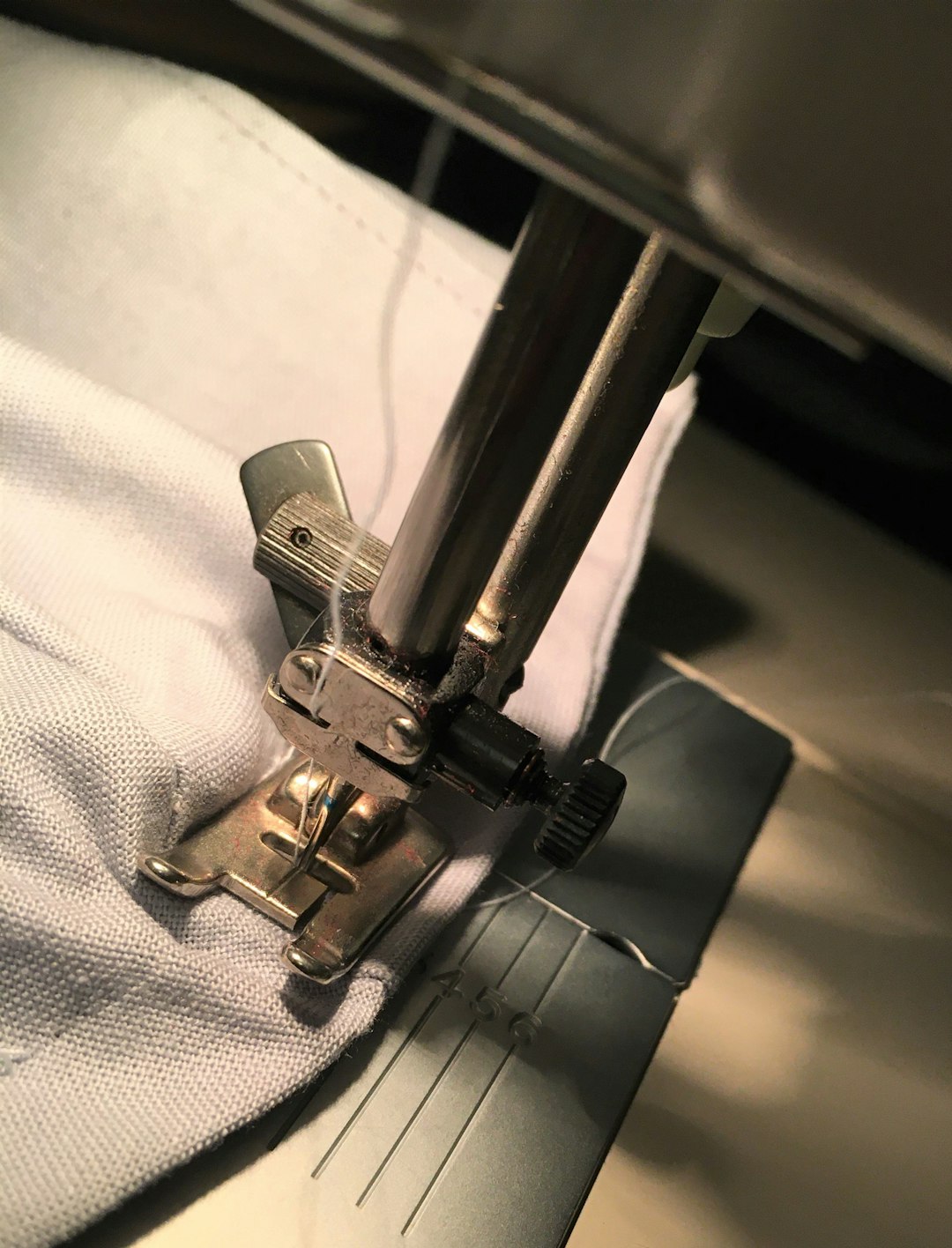
After all the major sewing is done, you’ll want to give your garment those finishing touches that make it truly wearable and polished.
Finishing touches are the small details added or completed at the end of a project – and they matter a lot! This is where you take your creation from “it’s basically together” to “wow, I can proudly wear this.”
Let’s go over a few key finishing steps:
Closures and Fastenings
Most garments need some way to put them on or take them off – for example, buttons, buttonholes, zippers, snaps, or hooks.
Attaching these properly is crucial for both function and look.
Sewing on buttons is typically done by hand with a needle and thread (often one of the first hand sewing skills you mastered). Take your time to sew buttons securely so they won’t pop off – use multiple passes of strong thread through the holes and consider a small extra knot of thread (called a shank) under the button if the fabric is thick.
If your garment has buttonholes, you might have sewn those using a machine’s buttonhole function or by hand with a blanket stitch. Make sure to carefully cut open the buttonhole (a seam ripper works well – just go slowly to avoid cutting beyond the bar tacks).
For zippers, if you didn’t attach them earlier, now is the time. Zippers can be machine-sewn with a special zipper foot; just be sure they are aligned straight and the stitching is close enough to the zipper teeth so it looks neat.
Whether it’s a dress zipper or shirt buttons, these closures usually come at the end of the project.
Pay attention here – a wonky buttonhole or misaligned zipper can detract from an otherwise great sewing job. But don’t stress: with careful marking and sewing, you’ll do fine. And remember, even experienced sewists sometimes redo a buttonhole or zipper to get it just right.
Hemming
The hem is the finished edge at the bottom of a garment (like the bottom of a skirt, pant leg, or sleeve cuff).
Hemming is an important finishing touch because it prevents the fabric from fraying and gives a clean edge.
There are different ways to hem depending on the garment and fabric.
A simple way is a double-fold hem: fold the raw edge up once, then fold it up again and stitch along the fold to encase the raw edge. Many beginners do this by machine with a straight stitch (just make sure to sew evenly so your stitching line looks straight from the outside).
For some garments, especially those made of very fine fabric or where you want an invisible finish (like a formal dress or dress pants), you might do the hem by hand using a blind stitch. This takes more time but results in a nearly invisible hem from the outside.
Whichever method, make sure the hem depth is even all the way around.
As a tip, when you’re sewing work wear or formal wear, a slightly deeper hem (like 1-2 inches) can give a more professional look than a tiny hem.
Press the hem after sewing for a crisp finish.
Final Seam Finishing and Trimming
At this stage, you should double-check all your seams inside the garment.
Did you remember to finish the raw edges on the inside (with zigzag or other methods) so they won’t unravel? If not, now is a good time to do that.
Clip any remaining excess threads hanging on the inside – a tidy inside is part of a well-finished garment (you’ll thank yourself later when threads aren’t snagging every time you wear or wash it).
If a seam allowance is bulky, you can trim it down a bit. For instance, necklines or armhole seams often benefit from trimming and clipping into the seam allowance so that curves lay flat.
These little clean-up tasks might seem minor, but they contribute to the garment’s comfort and longevity.
Pressing and Final Touches
We’ve said it before, but it bears repeating: press, press, press!
Give the entire garment a good press at the end. Iron the seams, the hems, the collar or any details so that everything lies nicely.
Pressing makes a homemade garment look store-bought by removing any puckers or wrinkles from the sewing process. It’s that magic touch that makes your sewing look professional. Many experts will tell you that “pressing is half of sewing,” and it’s true – a well-pressed garment just looks exponentially better.
In addition to pressing, any decorative finishing touches can be done now. This could be adding a bow, a decorative topstitch line along a seam (topstitching can both reinforce a seam and add a nice detail), or sewing on trims or embellishments.
These extras are optional and project-dependent, but if you want to personalize your creation, go for it! Just make sure any additions are securely sewn on and complement the overall piece.
By attending to these finishing touches, you ensure your garment is not only stylish but also durable.
It’s a great feeling to flip a piece of clothing inside out and see neat seams, or a perfectly sewn button.
Take pride in these details – you’ve earned it through careful work.
Finishing touches are where you really see the transformation from fabric to fashion.
Give yourself a pat on the back; you’re now ready to strut in your handmade creation!
Sewing for style: From Casual to Couture

You’ve learned the basics – now how do you apply these skills to different types of fashion?
One of the wonderful things about sewing is that once you have the fundamental techniques down, you can make all kinds of garments, from simple everyday wear to elaborate special-occasion outfits.
In this section, let’s explore sewing for style across a range of fashion categories, from casual to couture.
No matter where your fashion interests lie, the process of creation is similar – it’s the fabrics and techniques that may vary.
Here’s how your sewing journey can evolve into various styles.
Casual Wear
This is the realm of everyday clothing – think comfy t-shirts, simple dresses, skirts, or casual pants.
Sewing casual wear is a great way to practice your skills because these garments often use easier fabrics like cotton or knit jersey that are friendly to beginners. For example, a basic cotton skirt or a pair of elastic-waist shorts is an excellent first clothing project.
You’ll still apply the same techniques (measuring, cutting, seaming, hemming), but the construction tends to be straightforward.
Casual patterns typically don’t require extreme precision fitting, and the styles are forgiving.
You can also be creative – choose fun printed fabrics or add little personal touches like a contrast pocket.
The focus with casual sewing is on creating clothes that are wearable day-to-day, so durability and comfort matter.
It’s also an opportunity to learn how to sew clothes that fit you – even a simple garment, when made to your measurements, can fit better than store-bought.
Starting with casual wear builds confidence, and you get practical pieces for your wardrobe as a bonus.
Bridal Wear
On the opposite end of the spectrum from a t-shirt is sewing a wedding dress or bridal gown.
Bridal wear sewing is an advanced undertaking, but it’s something many sewists aspire to once they have enough experience.
Wedding dresses and formal bridal attire often involve delicate, luxurious fabrics (like silk satin, lace, chiffon, and tulle) and techniques that require patience and precision. For instance, sewing a bridal gown might entail working with multiple layers, adding a lining, using interfacing for structure in a bodice, hand-sewing lace appliqués, and installing things like corset backs or lengthy invisible zippers.
t’s not uncommon for bridal sewing to involve a lot of hand stitching as well – truly “couture” level sewing.
If you’re a beginner, a full bridal gown might be a bit out of reach for now, but don’t be discouraged – the skills you’re learning now are exactly what you’ll build on for such projects.
Many seamstresses start by sewing simpler formal dresses and gradually work up to wedding wear.
The key differences with bridal sewing are the fabrics and level of detail: delicate bridal fabrics can be slippery or prone to fraying, so they demand careful handling, and embellishments like beadwork or lace layering require time.
The reward, however, is huge – creating a bridal gown, whether for yourself or someone else, is like creating a wearable piece of art.
If bridal wear is a goal of yours, keep practicing those precision skills. One day you’ll be ready, and you’ll find that everything from marking the fabric carefully to hand-finishing the hem is worth the effort for that dream dress.
Evening Wear
Sewing evening wear (like cocktail dresses, prom dresses, or gala gowns) is similar in some ways to bridal sewing – the outfits are formal, and the fabrics are often fancy – but you have more freedom in colour and style.
Evening wear sewing typically involves fabrics such as satin, silk, velvet, sequins, lace, or tulle – the kind of materials that scream “special occasion.” In fact, evening gowns are generally made from formal fabrics like silk, satin, sequins, lace, and tulle.
These fabrics each have their quirks: silk and satin can be slippery and show pin marks, sequined or beaded fabric can be tough to sew through (often you have to remove sequins from the seam allowances), and tulle is sheer and can be tricky to control.
Because of these challenges, evening wear projects are a bit more advanced. However, many patterns for formal dresses are actually pretty straightforward in construction – the drama comes from the fabric and silhouette more than dozens of seams.
If you’re venturing into evening wear, choose a pattern that’s rated intermediate once you’ve done a few simpler projects.
You’ll learn techniques like underlining (to give thin fabric more body), using stabilizers for necklines, or sewing linings. An evening dress might also introduce skills like gathering (for example, gathering fabric to create a full skirt) or working with bias-cut pieces for a flattering drape.
The key is to take it slow and practice on scraps of your special fabric first to get the settings right.
With dedication, you can absolutely create stunning evening attire. Imagine stepping into a party wearing a dress you made yourself – that’s a huge confidence boost!
Corporate Fashion (Work Wear)
Sewing your own corporate or office wear allows you to tailor professional garments to fit perfectly.
Corporate fashion sewing usually involves garments like blazers, dress pants, pencil skirts, and tailored dresses or shirts that you would wear to work or business events.
These pieces often require more structured sewing techniques.
For example, making a blazer or suit jacket involves working with thicker suiting fabrics, adding interfacings to give shape to collars and lapels, inserting a lining, and mastering precise details like welt pockets or buttonholes. It’s certainly a step up in complexity from casual wear.
A simpler starting point in corporate attire might be a pencil skirt or a classic dress. These still teach you important skills like sewing darts for shaping (common in office wear to achieve a tailored fit through the bust or waist) and installing invisible zippers neatly.
When sewing work wear, precision and finishing are extra important because you want the garments to have a polished, store-bought appearance suitable for a professional setting.
Pay attention to things like topstitching (which can add a crisp, finished look) and pressing seams sharply. The fabrics for corporate wear tend to be medium-weight and stable (think wool blends, cotton sateen, or polyester blends that are not too flimsy), which can actually be easier to sew than slippery silks – the challenge lies more in the construction techniques and achieving a good fit.
As you advance, you might try making a suit set or a button-up shirt. These projects will solidify your skills in garment construction and teach you some tailoring tricks.
The end result is a custom wardrobe that fits you perfectly and looks entirely professional. Imagine wearing a blazer at the office and when someone compliments it, you proudly say, “Thanks, I made it!”
In all these categories – casual, bridal, evening, and corporate – the underlying sewing techniques are the same, only applied in different ways.
The journey from sewing a simple cotton top to sewing a silk evening gown is just a matter of building skills step by step.
You might start with a straightforward project (like a beginner-friendly skirt) and later find yourself doing bridal wear sewing with lace and layers, or crafting a chic suit for work.
Each project, whether simple or complex, teaches you something new and builds on what you already know.
The most empowering thing is realizing that with practice, there’s almost no limit to what you can sew.
You can follow your fashion inspiration and create pieces that fit your body and style, whether it’s a quirky print sundress for weekend wear or an elegant gown for a special event.
Sewing opens up a whole world of creativity – you’re not stuck with what’s available in stores. Want a vintage-style evening dress in a specific color? You can make it. Need a pair of trousers that actually fit your waist and hips? You can tailor your own.
As you progress, you may also explore the realm of couture techniques (the methods used in high-end, made-to-measure fashion).
Couture sewing often involves a lot of handwork, such as hand-picked zippers, intricate hand embroidery, or fine hand finishing of linings. While that’s a level beyond beginner, it’s something to aspire to if you love the craft.
Even at the beginner stage, it’s inspiring to know such techniques exist – you might incorporate a bit of hand couture detail in a project just for fun.
In summary, sewing for style means using your foundational skills to create garments for any occasion.
Start with what excites you and suits your current skill level, and then keep challenging yourself with new projects. Whether you’re sewing a cozy pair of pajama pants or a show-stopping evening gown, the process is empowering. You’re turning fabric and thread into something uniquely yours – and that’s the essence of fashion sewing.
Conclusion
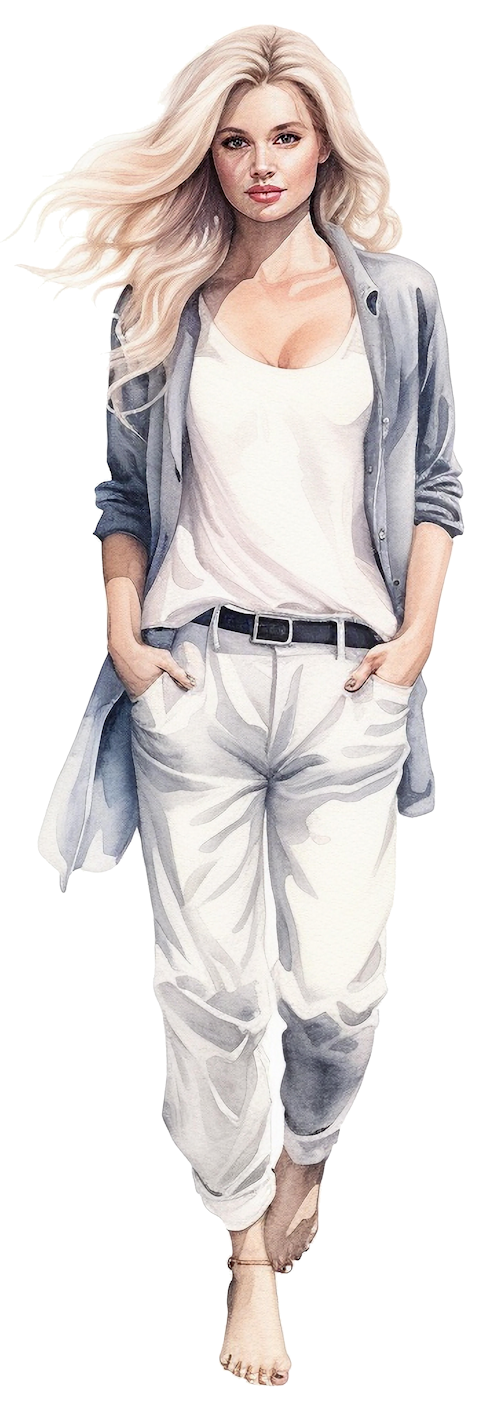
Congratulations on making it through this beginner’s guide to sewing clothing!
By now, you’ve learned about hand sewing, been introduced to the sewing machine, and explored essential techniques like seams, pressing, and finishing.
You also have a basic roadmap for how garments come together and ideas for sewing projects ranging from casual to couture.
That’s a lot of ground covered – and it’s just the beginning of your sewing journey.
Learning to sew your own clothes is a bit like learning a new language: at first the “grammar” (rules and techniques) may seem overwhelming, but with practice, it starts to flow naturally.
Remember, every expert sewer started as a beginner. They made crooked stitches, sewed sleeves on inside-out, or had wonky hems at some point – but they kept going. The same will be true for you. Don’t be discouraged by mistakes; each one is an opportunity to learn (and we’ve all become good friends with our seam rippers, taking out stitches to try again!).
Celebrate each milestone: your first successful seam, your first completed garment, your first time wearing something you made in public – these are huge accomplishments.
As next steps, consider trying a simple sewing project to apply what you’ve learned. Perhaps download a beginner-friendly sewing pattern (many pattern companies label easy patterns as “Learn to Sew” or “Beginner”). Something like a basic skirt, a simple top, or pull-on pants is perfect for a first garment.
Set up your sewing space with your machine and tools, put on some music or a podcast, and enjoy the process. Use this article as a reference if you need a refresher on a technique. And don’t hesitate to seek out additional resources: there are countless tutorials, videos, and sewing communities online eager to help newcomers.
Sewing is a lifelong learning experience – even those who have sewn for decades still discover new tips and tricks – and that’s part of the fun.
Most importantly, keep a positive and patient mindset. There will be moments of frustration (like a bobbin tangling or a seam not matching up), but there will be even more moments of pride and joy.
Few things compare to the satisfaction of saying “I made this” when someone compliments your outfit, or the confidence boost you get from wearing a garment tailored by and for yourself.
Sewing is empowering – it gives you the ability to create, to solve problems, and to express yourself through fashion.
We hope this guide has made the world of sewing clothes a little less daunting and a lot more exciting for you. With practice, you’ll continue to build your skills and soon you’ll be tackling projects you once thought were impossible.
So grab some fabric, thread your machine (or needle), and start stitching.
Happy sewing, and welcome to the wonderful world of making your own fashion! Every stitch you sew is one step further into an amazing new hobby and skill set. Now, go forth and sew your style – you’ve got this!

